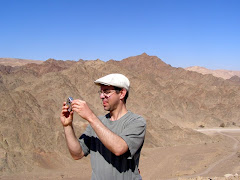 I have been back in the U.S. for over a year and but I am still reading about Florence. I finished reading two books about the Medici and have read enough about Renaissance art to realize I could have enjoyed a couple of months in the city rather than two days. I didn't know many names of artists--actually I couldn't have made any intelligent comment distinguishing Donatello and Botticelli and I would have answered mention of Fra Angelico or Cellini with a blank stare. But I had heard about the Duomo with its Baptistry with its famous doors and knew I wanted to see the famous sculptures by Michelangelo, such as David, so there was no question of there being enough in Florence to keep my uninformed eye busy for the days I was there.
I have been back in the U.S. for over a year and but I am still reading about Florence. I finished reading two books about the Medici and have read enough about Renaissance art to realize I could have enjoyed a couple of months in the city rather than two days. I didn't know many names of artists--actually I couldn't have made any intelligent comment distinguishing Donatello and Botticelli and I would have answered mention of Fra Angelico or Cellini with a blank stare. But I had heard about the Duomo with its Baptistry with its famous doors and knew I wanted to see the famous sculptures by Michelangelo, such as David, so there was no question of there being enough in Florence to keep my uninformed eye busy for the days I was there.Upon arrival, we took advantage of European Museum Day (or something to that effect) and got into the Uffizi Gallery for free. I'm usually good at this aspect of travel--get to the museums based on hours of operation and I'm certainly going to notice half price days and the like. I had a short hit list for the Uffizi: Michelangelo´s ¨The Holy Family,¨ Annunciation by Leonardo de Vinci, and Raphael´s Madonnah of the Goldfinch.¨ The most memorable is "The Holy Family." Perhaps it was the interaction among the subjects and the presence of Joseph that made it memorable--but I often fall for bright colors and Michelangelo's metallic ones certainly caught my attention. Perhaps it was this museum that started my appreciation of The Annunciation as an attractive subject for art. As I walked through the gallery that day, I noticed that in many Renaissance paintings, Mary is show with a book.
After a most satisfying museum visit, my traveling companion had the sense to suggest that we spend some time in the Piazza della Signoria with the adjacent Loggia dei Lanzi. There, I noticed Cellini's Medusa and was captivated. I usually favor biblical over mythological themes and don't know why I noticed this and totally neglected Judith and Holofernes, which I have read a bit about since. The scene in this area was enhanced by live musicians. This public square has quite a history and civic symbolism that lead Michelangelo's David to be placed in it. The original is not indoors and a copy shows where it stood previously.
The next morning, in the Bargello Museum, I spent a lot of time looking at parts of a statue of Perseus by Cel
 lini. Part of the original was replaced outside and placed in this museum. Another highlight was seeing the two competition friezes, by Brunelleschi and Ghiberti, depicting Abraham and Isaac. The competition was for the commission to make similar friezes for doors of the Duomo Baptistry.
lini. Part of the original was replaced outside and placed in this museum. Another highlight was seeing the two competition friezes, by Brunelleschi and Ghiberti, depicting Abraham and Isaac. The competition was for the commission to make similar friezes for doors of the Duomo Baptistry.I spent quite a bit of attention absorbing the Duomo Baptistry and Cathedral (with the famous orange dome). The museum contains the original panels from the Baptistry doors as well as many other pieces of art from previous decorations of the church. I enjoyed the series of hectagon panels by one of the Pisano guys as well as balcolnies for choirs. The museum had models from which I tried to imagine the former facade of the church, with its statues of numerous Biblical prophets.
The Galleria dell' Accademia was open until 10pm so I saved it for my last evening in Florence. The museum features Michelangelo´s David and there are other of his sculptures knowns as prisoners since they are unfinished and appear as though a guy is trying to escape from the rock.
I came away with the opinion that the best way to take in Florence is to focus on the churches. I went on the morning tours that came free with the hostel so I saw the more famous of the downtown churches but could imagine arriving in town with an awareness of what works were in which churches as well as a plan for enjoying the best of the museums. Aside from the Duomo, The Church of Santo Spiritu (Church of the Holy Spirit) was the most notable. In my book, it certainly wins for atmosphere. There was an organ playing softly and the Florentine style of off-white stuccoed walls and grey marble columns--beautiful!



